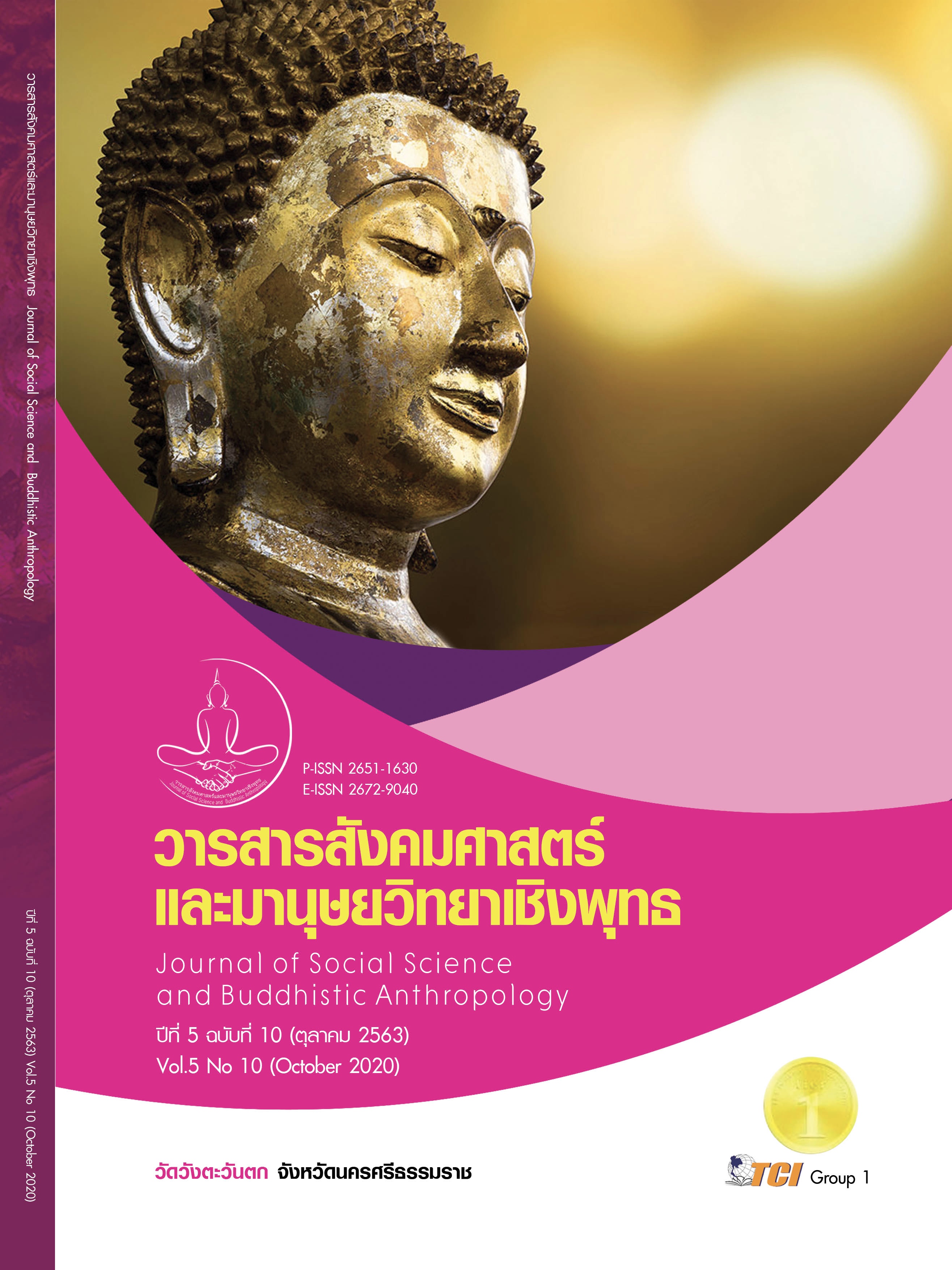A STUDY OF BURMESE LANGUAGE AND CULTURE USED IN SAMUT SAKHON PROVINCE
Keywords:
Burmese Language, Culture, Samut Sakhon ProvinceAbstract
This research article purposes were 1) to study Burmese Language Spoken in Samut Sakhon Province 2) to study the code mixing of Thai-English in Burmese Language of Samut Sakhon Province 3) to study Culture of Myanmar in Samut Sakhon Province. The methodology was qualitative research through the main data collection, research works and interviewing from 15 Myanmar Informants. The samples were selected by purposive sampling and divided into three age group: young age group 16-30 years, middle age group 31 - 45 years and old age group 46-60 years by five informants were selected from each of the three age group and analyzed by descriptive linguistics and percentage. The result of this research revealed that Burmese language comprise of 33 consonant phonemes namely; / b, p, ph, d, t, th, g, k, kh, ʔ, j, c, ch, θ, z, s, sh, ʃ, h, m, m̥, n, n̥, ɲ, ɲ̥, ŋ, ŋ̥, l, l̥, w, w̥, y, a / and Burmese Language has totally 22 vowel phonemes there are consists of 7 normal vowel phonemes namely; /a, i, u, e, ɛ, o, ɔ /; 7 Nasal vowel phonemes for example; / iñ, eñ, añ, aiñ, uñ, oñ, ɔñ /and 8 stop vowel phonemes namely; /iˀ, eˀ, ɛˀ, aˀ, aiˀ[aIˀ], uˀ, oˀ, ɔˀ/, there are four tone phonemes namely; level tone, mid falling, high falling and stop tone. And the code mixing of Thai-English in Burmese language were found 6 kinds, such as Noun, Pronoun, Verb, Adjective, Preposition and Exclamation. Which the young age group was 16-30 years old, who used the code mixing words of Thai-English in Burmese more than other group. As for the cultures are four necessities namely; food, beauty and clothing, matrimony, and Buddhist activities.
References
ฌัลลิกา มหาพูนทอง. (2561). การเปลี่ยนภาษาไทยถิ่นภูเก็ตปัจจุบันผ่านการสัมผัสภาษาถิ่น. วารสารมนุษยศาสตร์ มหาวิทยาลัยเกษตรศาสตร์, 25 (1), 155 - 183.
บรรจบ พันธุเมธา. (2561). ลักษณะภาษาไทย. กรุงเทพมหานคร: มหาวิทยาลัยรามคำแหง.
บุญชม ศรีสะอาด. (2556). การวิจัยเบื้องต้น. กรุงเทพมหานคร: สุวีริยาสาส์น.
พระเทพเวที (ประยุทธ์ ปยุตฺโต). (2533). พจนานุกรมพุทธศาสตร์ ฉบับประมวลศัพท์. กรุงเทพมหานคร: มหาจุฬาลงกรณ์ราชวิทยาลัย.
เรืองเดช ปันเขื่อนขัติย์. (2554). ภาษาศาสตร์ภาษาไทย. กรุงเทพมหานคร: จุฬาลงกรณราขวิทยาลัย.
วงศ์แข ภัทรนิตย์. (2525). การศึกษาการใช้ภาษาอังกฤษปนในไทย. ใน วิทยานิพนธ์ศิลปศาสตรมหาบัณฑิต สาขาภาษาศาสตร์. มหาวิทยาลัยศรีนครินทรวิโรฒ.
วิไลศักดิ์ กิ่งคำ. (2559). การศึกษาเปรียบเทียบภาษาและวัฒนธรรมไตคำตี่ที่พูดในอินเดียและไทยพวนที่พูดในไทย. ใน วิทยานิพนธ์มนุษยศาสตร์มหาบัณฑิต สาขาวิชาภาษาไทย. มหาวิทยาลัยเกษตรศาสตร์.
ศยามล ไทรหาญ. (2553). การปนภาษาอังกฤษในภาษาไทยในนิตยสารวัยรุ่น. ใน วิทยานิพนธ์ศิลปศาสตรมหาบัณฑิต สาขาภาษาศาสตร์ประยุกต์. มหาวิทยาเกษตรศาสตร์.
สำนักงานแรงงานจังหวัดสมุทรสาคร. (2561). สถานการณ์แรงงานต่างด้าวจังหวัดสมุทรสาคร. เรียกใช้เมื่อ 4 ตุลาคม 2651 จาก https://samutsakhon.mol.go.th
สุทธิรา ว่องพานิชเจริญ. (2540). การปนภาษาอังกฤษในภาษาไทยของนักจัดรายการวิทยุภาคเอฟเอ็ม . ใน วิทยานิพนธ์ศิลปศาสตรมหาบัณฑิต สาขาภาษาศาสตร์. มหาวิทยาลัยธรรมศาสตร์.
อมรา ประสิทธิ์รัฐสินธุ์. (2548). ภาษาในสังคมไทย: ความหลากหลาย การเปลี่ยนแปลง และการพัฒนา. กรุงเทพมหานคร: จุฬาลงกรณ์มหาวิทยาลัย.
อมรา ประสิทธิ์รัฐสินธุ์. (2550). ภาษาศาสตร์สังคม. กรุงเทพมหานคร: จุฬาลงกรณ์มหาวิทยาลัย.
Gimperz, J.J. (1977). Sociocultural Knowledge in conversation inference. in Linguistics and Anthropology. Georgetown University Press.
Hale, Austin. (1982). Research on Tibeto-Burman Languages Trends in Linguistics: State of the arts report. Berlin: Mouton.
Trudgill, Peter. (1986). Dialect in Contract. Oxford: Blackwell.
Weinreich Uriel. (1953). Language in contract. The Hague: Mouton.
Wheatley, Julain K. (1987). Burmese. In B. Comrie (Ed.) The world’s major languages. London: Routledge.








